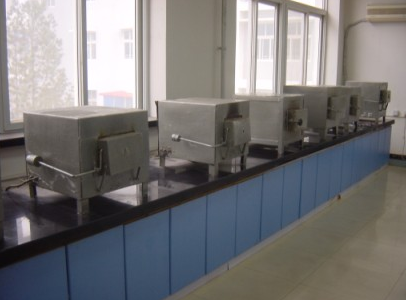产品:Metal heat treatment
Detailed
Detailed consultation with customer service
normalizing
Normalizing: the heat treatment process of heating steel or steel parts to 30 ℃ - 50 ℃ above the critical point AC3 (for hypoeutectoid steel) or ACCM (hypereutectoid steel), and cooling uniformly in free flowing air after holding for a proper time is normalizing.
After normalizing, the structure of hypoeutectoid steel is F + s, eutectoid steel is s, hypereutectoid steel is s + fe3cii. The main difference between normalizing and full annealing is that the cooling rate is faster, so as to normalize the steel structure, also known as normalizing treatment. The effect of normalizing is similar to that of annealing, but the microstructure obtained is finer, which is often used to improve the cutting performance of materials, and sometimes used for the final heat treatment of some parts with low requirements.
annealing
Annealing: the heat treatment process of heating the hypoeutectoid steel workpiece to 20-40 degrees above AC3 and cooling slowly (or buried in sand or lime) with the furnace to 500 degrees below in air after holding for a period of time.
Annealing is to heat the workpiece to a proper temperature, adopt different holding time according to the material and workpiece size, and then cool it slowly, so as to make the internal structure of the metal reach or close to the equilibrium state, or release the internal stress generated by the previous process, obtain good process performance and use performance, or make organization preparation for further quenching.
1. Full annealing
Complete annealing and weighing crystallization annealing are generally referred to as annealing, which is mainly used for casting, forging and hot rolling sections of various carbon and alloy steels with hypoeutectoid composition, and sometimes for welding structures. Generally, it is used as the final heat treatment of some non heavy work pieces or as the pre heat treatment of some workpieces.
2. Spheroidizing annealing
Spheroidizing annealing is mainly used for hypereutectoid carbon steel and alloy tool steel (such as steel grades used for manufacturing cutting tools, measuring tools and dies). Its main purpose is to reduce the hardness, improve the machinability, and prepare for later quenching.
3. Stress relief annealing
Stress relief annealing, also known as low temperature annealing (or high temperature tempering), is mainly used to eliminate the residual stress of castings, forgings, weldments, hot rolled parts, cold drawn parts, etc. If these stresses are not eliminated, it will cause deformation or cracks in the steel after a certain period of time or in the subsequent cutting process.
Quench
Quenching: a heat treatment process in which the steel is austenitized and cooled at a proper cooling rate, so that the unstable structure of the workpiece, such as martensite, changes completely or within a certain range of the cross section.
Quenching is the rapid cooling of workpiece in water, oil or other inorganic salt solution, organic water solution and other quenching medium after heating and heat preservation. After quenching, the steel becomes hard but brittle at the same time.
In order to reduce the brittleness of steel parts, the quenched steel parts are kept warm for a long time at a proper temperature higher than room temperature but lower than 650 ℃, and then cooled. This process is called tempering. Annealing, normalizing, quenching and tempering are the "four fires" in the whole heat treatment, in which quenching and tempering are closely related and often used together.
When quenching, the most commonly used cooling medium is salt water, water and oil. Salt water quenched workpiece, easy to get high hardness and smooth surface, not easy to produce hard soft spots, but easy to make workpiece deformation, even cracking. However, oil is only suitable for quenching some alloy steels or small-sized carbon steel workpieces with high stability of undercooled austenite.
tempering
Tempering: a heat treatment process in which the quenched workpiece is heated to a proper temperature below the critical point AC1 for a certain period of time, and then cooled in a satisfactory way to obtain the required structure and properties.
In order to reduce the brittleness of steel parts, the quenched steel parts are kept warm for a long time at a proper temperature higher than room temperature but lower than 650 ℃, and then cooled. This process is called tempering. Annealing, normalizing, quenching and tempering are the "four fires" in the whole heat treatment, in which quenching and tempering are closely related and often used together.
| Warm tip: the products supplied by Beijing Beike Xincai Technology Co., Ltd. are only used for scientific research, not for human body |
| Item ID | Info |
| BK2020011879-01 | CAS: ID:BK2020011879 Pack: Parameter:正火 Stock:100 Make up: Price:$0 |
| BK2020011879-02 | CAS: ID:BK2020011879 Pack: Parameter:退火 Stock:100 Make up: Price:$0 |
| BK2020011879-03 | CAS: ID:BK2020011879 Pack: Parameter:淬火 Stock:100 Make up: Price:$0 |
| BK2020011879-04 | CAS: ID:BK2020011879 Pack: Parameter:回火 Stock:100 Make up: Price:$0 |
| BK2020011879-05 | CAS: ID:BK2020011879 Pack: Parameter:热处理炉子 Stock:100 Make up: Price:$0 |
| BK2020011879-06 | CAS: ID:BK2020011879 Pack: Parameter:GLEEBLE 3500热模拟 Stock:100 Make up: Price:$0 |
- Previous: Metallographic analysi
- Next: ITOConductive glass su


 Material testing and consumables
Material testing and consumables
